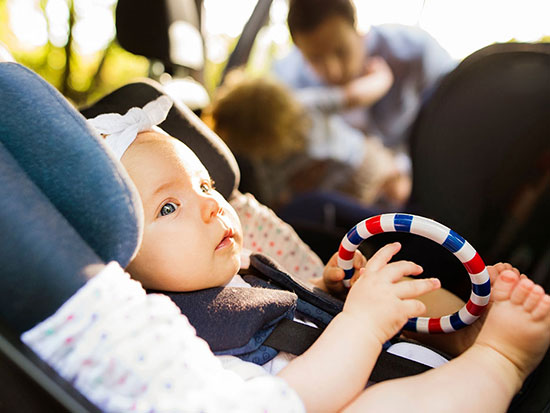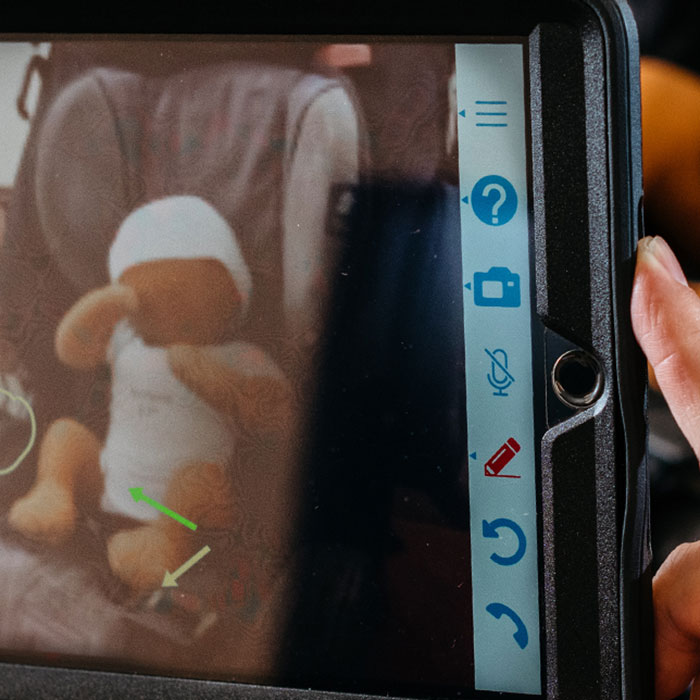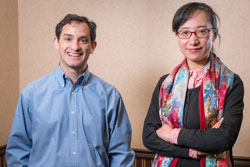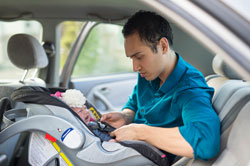Media contact: Yvonne Taunton
 How hard is it to install a car seat correctly? In all probability, it’s harder than you think.
How hard is it to install a car seat correctly? In all probability, it’s harder than you think.
In studies conducted over the past 10 years in the United States, Canada, France and Australia, anywhere from 70 to 100 percent of car seats were installed incorrectly, with infant seats being the most difficult to get right. According to the Centers for Disease Control and Prevention, motor vehicle injuries are a leading cause of death among children in the United States, with more than 126,000 injuries reported in kids 12 and under in 2016.
Properly installed car seats reduce serious and fatal injuries by up to 80 percent. But as the studies above show, proper installation is rare — and improper installation can have serious consequences. One 2007 study tested dozens of separate installation errors with pediatric dummies in a crash lab. Many of those errors resulted in significant (simulated) head and neck injuries, leading the researchers to conclude that “children have higher risk of being injured on a number of different body regions” when child restraint systems are misused.
Most people aren’t doing it right
Researchers have proposed several explanations for these car seat struggles. Every model has its own arrangement of straps and buckles, for instance, and installation techniques vary widely across vehicles. And as children grow, parents must keep up by buying new seats or remembering to resize shoulder harnesses.
|
“I suspected interactive virtual presence might be as effective for parents as help from a live certified technician.” |
“It is a complex task that most parents fail to do correctly,” says David Schwebel, Ph.D., University Professor and director of the Youth Safety Lab in UAB’s Department of Psychology and associate dean for research in the UAB College of Arts and Sciences. Help is available, of course, and it’s usually free. Child Passenger Safety (CPS) technicians, who are certified after completing a multi-day course, learn the intricacies of installing all the major brands and learn to secure them in different vehicle types. Free checks and parent training are widely available in many communities in the United States. But far too few parents take advantage of these services, as Schwebel and his co-authors noted in a recent study in the Journal of Safety Research: In 2015, there were only about 15,000 seats checked or installed in Florida, compared with more than 224,000 births (less than 7 percent).
 With "interactive virtual presence" apps on their smartphones or tablets, parents can communicate with expert installers and get instant feedback on what they're doing wrong. The technicians can draw on the screen with a sports TV-style "telestrator" to point out problem areas.
With "interactive virtual presence" apps on their smartphones or tablets, parents can communicate with expert installers and get instant feedback on what they're doing wrong. The technicians can draw on the screen with a sports TV-style "telestrator" to point out problem areas.
How augmented reality can help
In a series of studies, Schwebel is testing a new way to spread car seat safety to more parents: an “interactive virtual presence” app. With a smartphone or tablet camera, users connect to remote CPS technicians, who walk them through proper installation. Not only can the experts see and hear from the parents, they can point out danger spots or problematic issues directly on the video image through a three-dimensional image overlay. And once the seat is installed, they can talk parents through the steps necessary to verify it’s done correctly — and confirm proper installation with their own eyes.
Learn more about research in the UAB Department of PsychologyThe technology is owned by HelpLightning, a startup based at Birmingham’s Innovation Depot. When Schwebel learned about the product he began thinking about how to apply it to reduce child injury risk, and “car seat installation seemed the perfect fit,” he says. “It requires detailed instruction where visual connections and live interaction are optimal. I suspected interactive virtual presence might be as effective for parents as help from a live certified technician, and so far, the research seems to suggest my suspicions were correct.”
In a pilot study, Schwebel’s team reported that participants using the interactive virtual presence app installed infant car seats more accurately and faster than participants talking with CPS experts by phone or using the seat’s manual. In a 2017 study published in the Journal of Safety Research, the researchers tested the interactive virtual presence with volunteers at Florida car seat checkpoints and at preschools and daycare centers in Alabama. In both cases, the accuracy of child restraint installation was improved, yielding a combined weighted accuracy of approximately 90 percent. (Included among the errors were problems that were not fixable without buying a new car seat, as well as technician-made errors.)

Related story
Translating safety: visiting scholar inspired by UAB's VR approach to lower traffic injuries
With a $186,000 Safe System Innovation Grant from the Road to Zero Coalition, Schwebel and his collaborators are currently testing the technology as a way to reach rural populations. In the study, technicians at Children’s of Alabama are remotely assisting parents in rural Montana with proper installation of child restraints.
Car seats and China
Schwebel is also in discussions to extend his car seat research in China, the world’s leader in auto sales since 2009. He already has a number of ongoing child safety projects in China, including a substantial collaboration with Guoqing Hu, Ph.D., and his team at Central South University in Changsha, the capital of Hunan Province. These include app-based interventions to reduce unintentional injury among Chinese preschoolers and improve pedestrian safety among Chinese schoolchildren, as well as several epidemiological studies on injury risk (recent publications looked at poisonings and drowning deaths). “We also are exploring use of big data analysis of media reports about injury in China,” Schwebel says.
“In general, the cultural practice is not to use car seats in China,” he explains. In 2014, Safe Kids China estimated that only 2-3 percent of the population had or used car seats. However, “most experts predict there will be a national requirement to use car seats in the near future, similar to the laws present in every U.S. state now,” Schwebel says, noting that car seat sales are rising: a research partner in Changsha “is selling 10,000 car seats every month across China by Internet.”

How do you know if your child's car seat is safe?
See how it's done with these Ultimate Car Seat Guide tips from Safe Kids Worldwide
Meanwhile, there are estimated to be only about 100 certified car seat technicians in China. In comparison, there are nearly 100 certified CPS technicians in Alabama alone, and more than 42,000 worldwide. “We need more certified car seat technicians and we need a way to reach parents across all of China,” Schwebel says. “Interactive virtual presence might provide the solution.” Smartphones are ubiquitous among the growing Chinese middle class, “and they like to use them — at least as much as American parents, if not more,” he adds.
Schwebel envisions a centralized call center modeled on the U.S. system of poison control centers, with experts available to offer remote expertise. “All the pieces fall together for us to use interactive virtual presence to help the rapidly growing middle class in China install car seats into their vehicles properly.”
